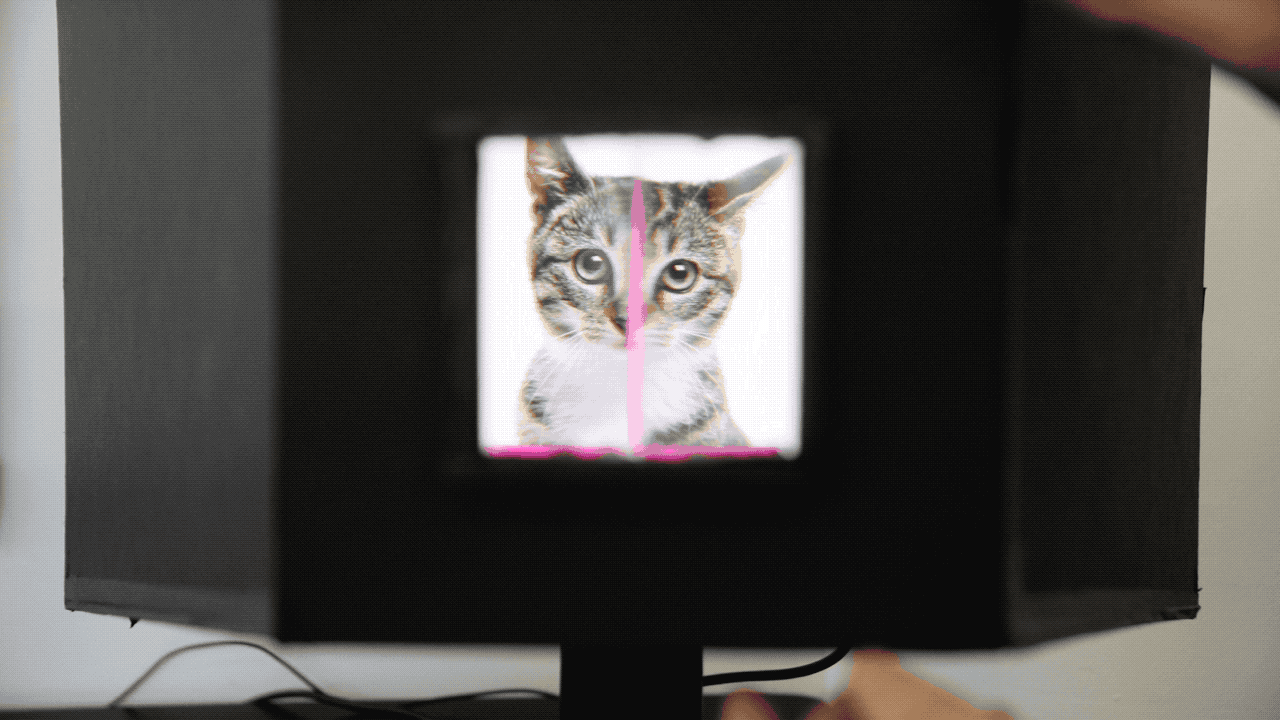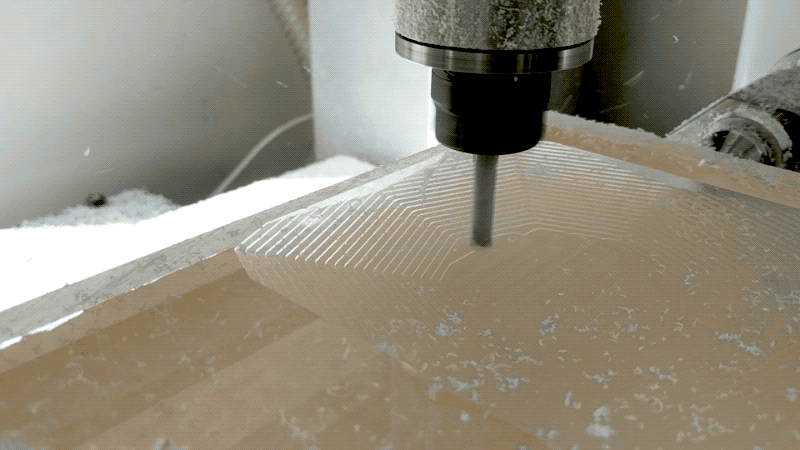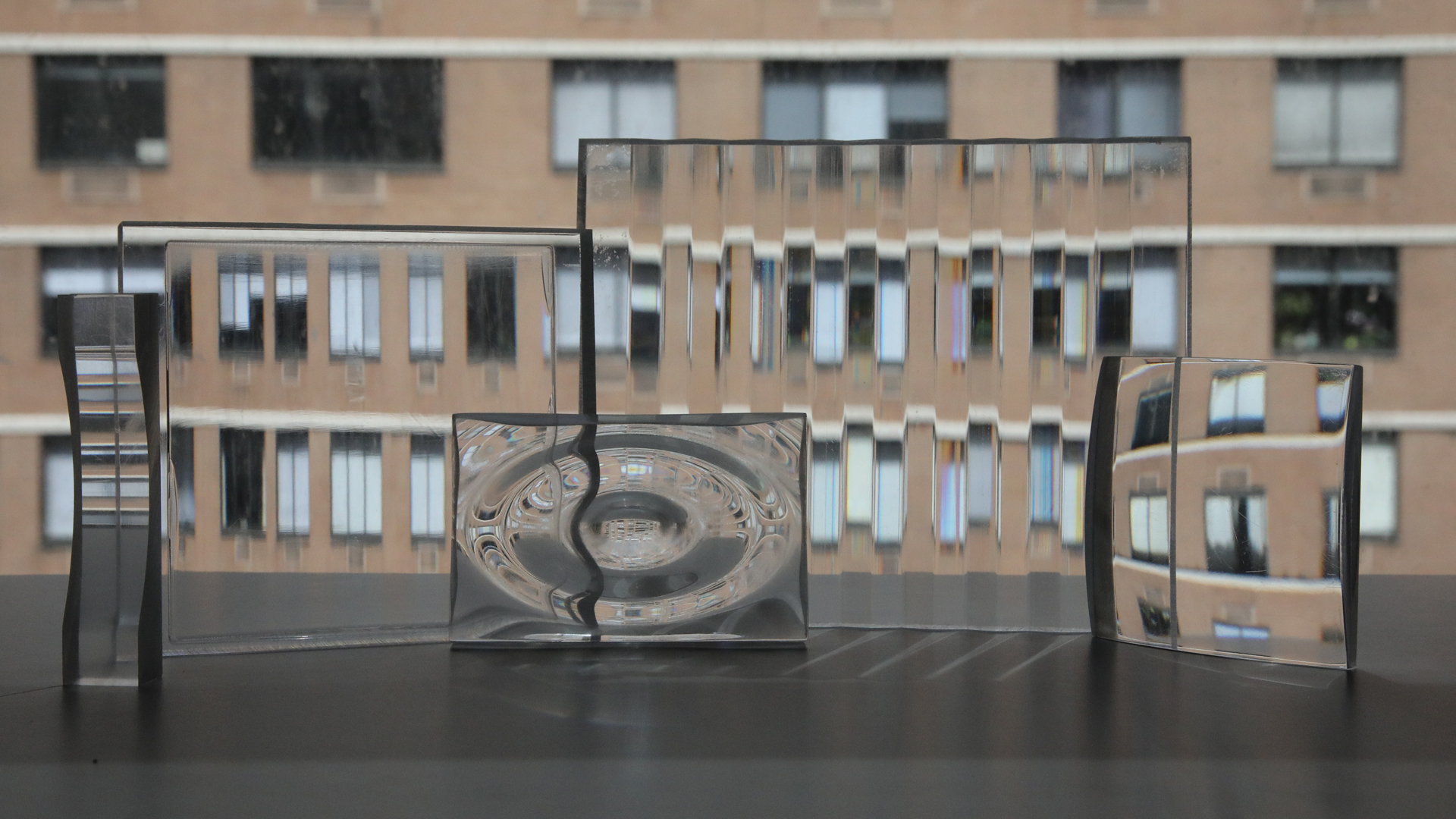How light interacts with surfaces, lenses and our visual perception is fundamental to how visual arts are created and perceived. Despite this importance, education around basic optical principles tends to employ a science-first approach which may not resonate within an artistic community. This installation attempts to bridge that gap by encouraging audience members to holistically engage with optics and the phenomenon of refraction.
This installation consists of a series of engagements with playful and impractical lenses. A custom software tool distorts images such that they can only be seen through these lenses (a process known as anamorphosis). In the first such engagement, audience members are invited to draw on a digital canvas while looking through one such lens. They are then able to view the results of their work with and without the lens. In the second engagement, audience members encounter a large, amorphous video projection. They later realize that the imagery can be decoded through a viewer mounted within the space. These experiments aim to inspire audience members’ curiosity about the behavior of light.
As an artist’s understanding of foundational optical principles grows, their palette is expanded to allow aesthetic exploration and play using these elements. This installation aims to reduce technical barriers to entry and inspire artists to incorporate creative custom optics into their practice.
Installation
Audience members sit down in front of a large black box with a small aperture in front. They install any of a number of interchangeable distorting lenses within the aperture, and align their eye using a guide protruding from the box. A monitor within begins to display imagery which, though seen through this distorting lens, appears totally undistorted. After a few images are displayed, the audience member is asked to draw their own images using a provided tablet. This done, they are asked to remove the lens and wonder at the results.

This installation relies on the powerful tool of Anamorphosis, deliberate perspective distortion, to create an experience in which the phenomenon of refraction can be experienced in a dramatic and fun way. Audience members can appreciate the effects of a refracting lens with or without knowing the science behind it. They can experience wonder without frustration. I believe this affect is necessary to inspire newfound interest in scientific topics. My hope is that this installation (as well as the documentation of my methods) will inspire artists to create work which makes exciting and unconventional use of custom optics.

Technical Implementation
Software (Unity):

Based in large part on this wonderful computational approach to creating anamorphoses (step by step tutorial in POV-Ray here), I created a tool for performing dioptric (refractive) anamorphoses in real-time using the Unity game engine. The basic function of this tool is to distort an image (or video – any 2D content) such that it can only be seen properly through a specific lens. The basic process for this is as follows:
- With a known set of distances between an audience member’s eye, lens and canvas (a screen or projection surface in my case), imagine a virtual image where you would like to see the correct, undistorted image (i.e. just in front of the lens),
- Create a grid of points (X,Y,Z coordinates) on that virtual image plane,
- For each point in that virtual image grid:
- imagine a ray from the audience member’s eyeball through that point,
- calculate how the ray is refracted upon entering the lens,
- calculate how the ray is refracted upon leaving the lens,
- calculate where the ray intersects the canvas and save that point!
- Now we have a grid of the virtual image points, as projected through the lens and onto the canvas. Using this grid of points:
- create a polygon mesh which represents our refracted image,
- use the position of each distorted point’s corresponding original (virtual image) position within the virtual image grid to calculate the UV coordinate at that point on the mesh,
- Apply an image or other 2D content as a texture to that mesh.
Hardware (Lenses):
The lenses in this installation were designed digitally, CNC cut in acrylic plastic, and finished and polished by hand. A brief overview of this process follows:
Rhino 3D CAD Design:

Cutting on CNC Mill:

Final Lenses:
